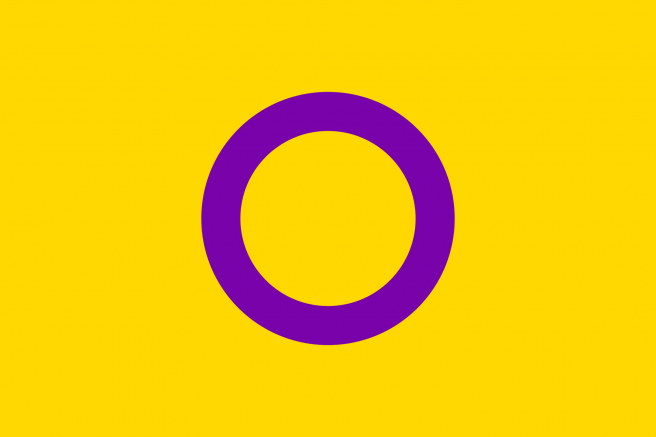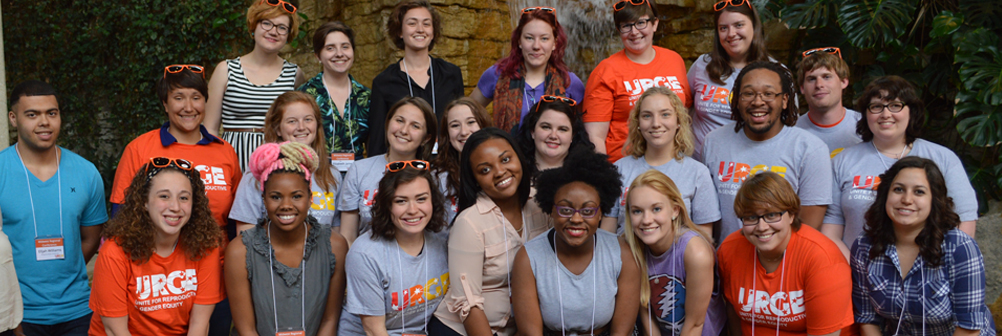This Intersex Awareness Day, Some Notes on the ‘I’ in LGBTQI
Posted by Guest Blogger
October 26, 2016

As the acronym that we come to understand as our community expands, so must our awareness of all it means. In recent years, an I has come to dangle from the end of LGBTQI.
Most of us know that L is for Lesbian, G for Gay, B for Bisexual, T is for Transgender, and––depending on the weather––Q is for Queer or Questioning. Yet the ‘I’ that dangles at the end may confuse some; what does it stand for, anyway? Innovative? Impressive? Inspirational?
While all of these are applicable, in this particular game of alphabet soup, ‘I’ is for Intersex. Intersex is a term used to describe folks who are born with genetic, hormonal, genital, or other sex characteristics that do not align with the stereotypical definitions of male or female bodies. Intersex people may have biological traits considered to belong to both sexes or lack some of the features often used to define someone as one or the other sex.
According to a first-of-its-kind report on the global intersex movement produced by the Astraea Foundation, experts have found that 1.7% of the world’s population is intersex. Many intersex people are subject to a host of medically unnecessary, corrective procedures to “normalize” their bodies to fit what dominant society understands to be male and female bodies. Within LGBTQI and reproductive justice communities, the horrific violation of intersex human rights remains a little talked-about issue.
“An intersex person might have been told that they had surgery for ‘cancer.’ That person might believe this for decades, and suffer the fear of the cancer coming back, when in fact their healthy gonads were removed. This is how human rights breaches happen: without the person even knowing that they occurred or that they happened due to the person being intersex,” notes Dan Christian Ghattas, chair of Organisation Intersex International Europe (OII Europe).
While 1.7% may seem like an infinitesimal number of people, that is exactly why intersex activism is so important––without intersex voices being elevated, many may fail to take note of these injustices. Even within the LGBTQ community, it isn’t uncommon for intersex people, given their focus on bodily autonomy, to be erroneously lumped in with trans* or gender non-conforming people. And while some intersex people identify as trans, many do not; many do not even identify as LGBTQI. One thing’s certain: intersex isn’t about gender and very often it is not used as an identity; it’s about bodily diversity.
As Organisation Intersex International Australia (OII Australia) notes:
Intersex, trans, and same sex attraction are distinct concepts and issues, and people with intersex variations face distinct health and human rights issues. The medical model for the treatment of people with intersex variations means that the intersex movement also has much in common with the disability movement […]
We recognise that some people with intersex variations change sex classification, and that some identify with the trans community […] This is no more or less remarkable than when intersex or trans people are lesbian or gay. A particular difficulty faced by many intersex people who transition is that we may have had involuntary and irreversible medical treatment to make our bodies appear more like our incorrect assigned sex, thus, much of the right hand column applies.
Despite being few in number and vastly under-resourced (it’s estimated than less than 1% of all institutional funding reaches the pockets of intersex organizations), the intersex human rights movement manages to do a lot with very little.
In China, the one-member organization Beyond the Boundary (BtB) has become a tour de force in international human rights. BtB has taken part in a new wave of intersex activism at the international level, presenting a report to the United Nations Committee Against Torture. Across the globe in Uganda, Support Initiative for People with Atypical Sex Development (SIPD) works to cultivate alliances with religious, political, and educational alliances. Aware that intolerance is learned and that intersex youth need particular support, SIPD also conducts outreach to school kids. Mexico’s Brújula Intersexual uses the power of social media to translate and share articles on being intersex for Spanish-speaking people across the Americas.
And what does this all mean for our reproductive justice work in the United States? As fierce young people working cross-movements and fighting for the fundamental right for bodily autonomy, intersex activists are our allies in that struggle and we need to show up for them. As URGE says in their mission statement: each body should be celebrated and supported to be well, happy, and thriving.
What better day than Intersex Awareness Day to take another step closer to achieving justice?
Written by Sarah Fonseca
The Astraea Foundation is the host of the world’s first Intersex Human Rights Fund. To hear more stories about the 32 passionate activists and organizations it supports, visit the Fund’s Tumblr. Sarah Fonseca is an alum of Georgia Southern University chapter of URGE.
Leave a Reply
You must be logged in to post a comment.

